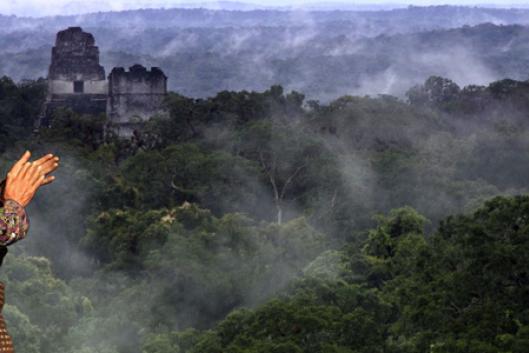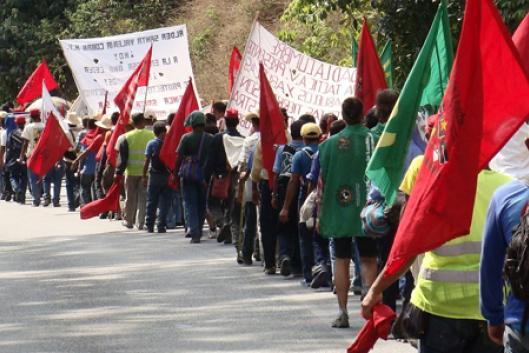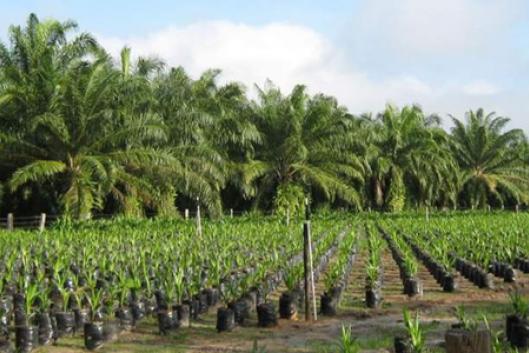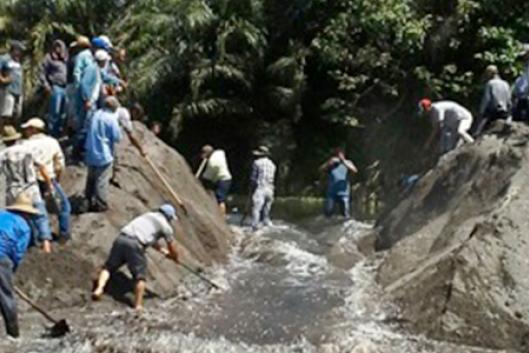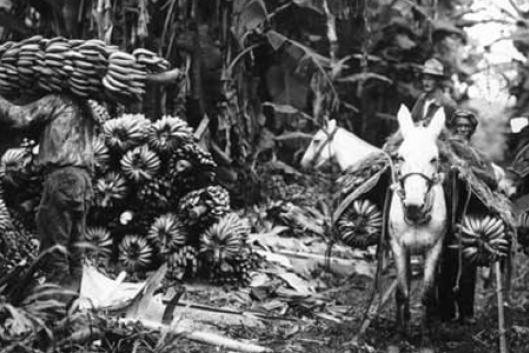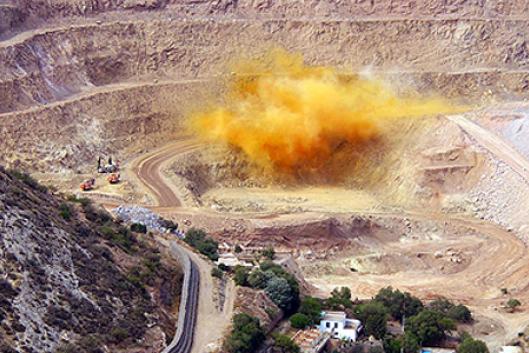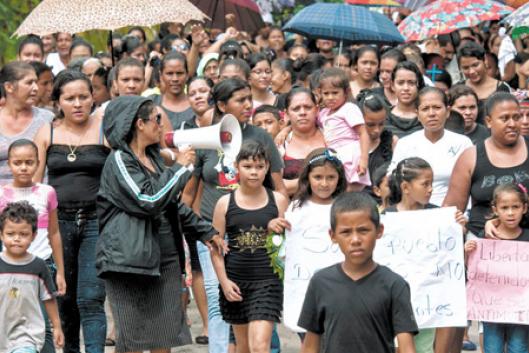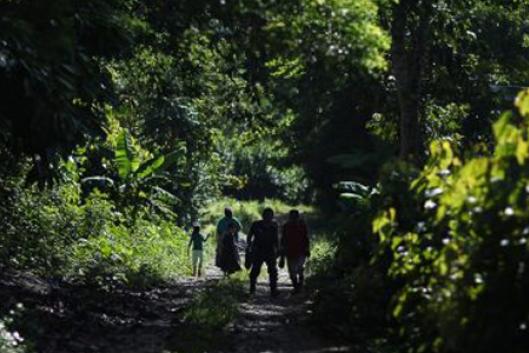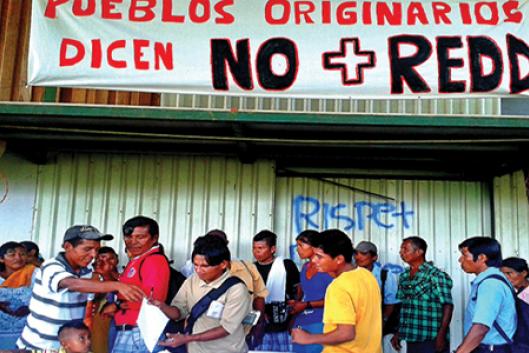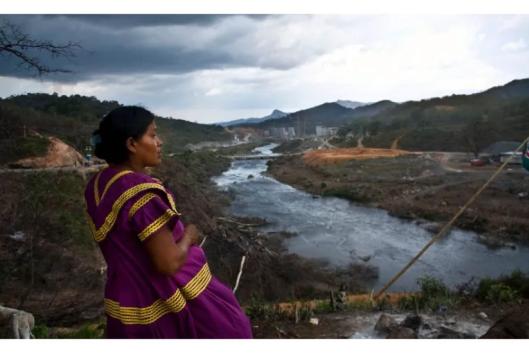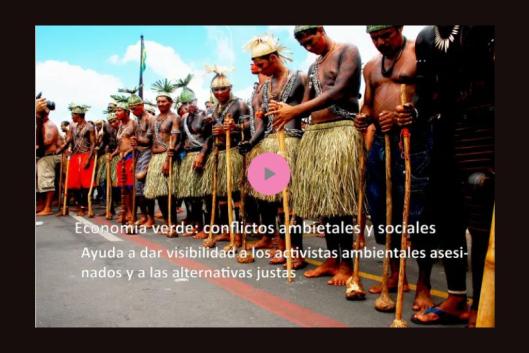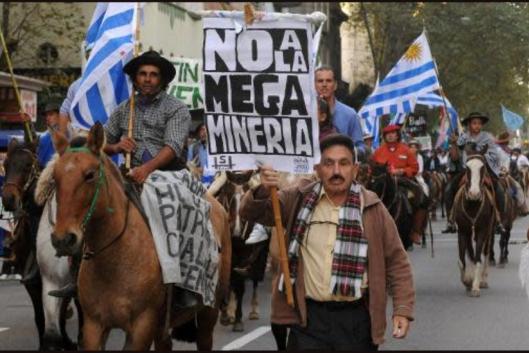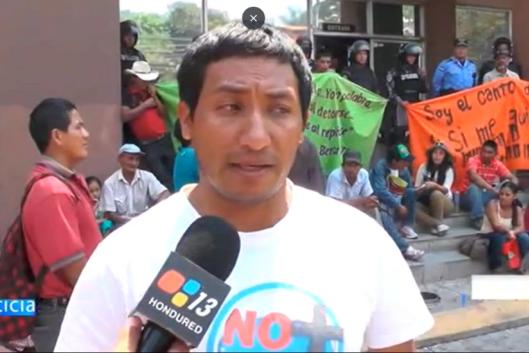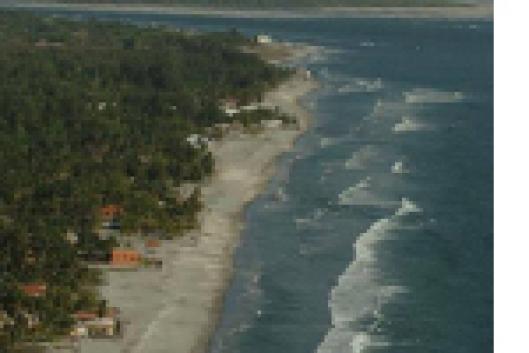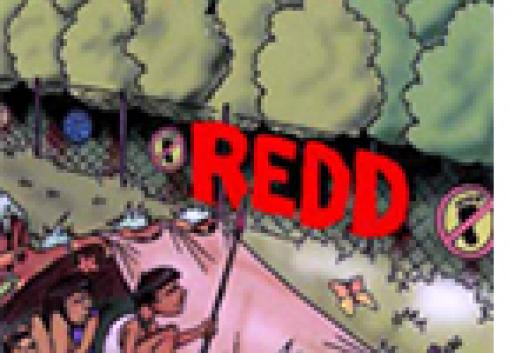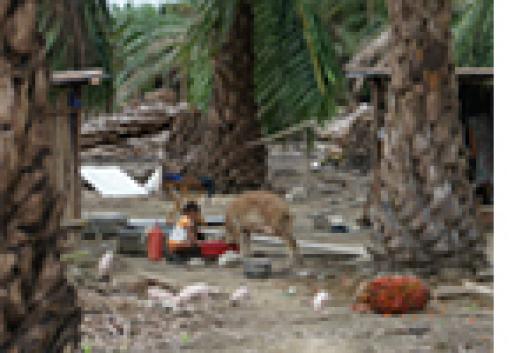When we think of the countries ranging from southern Mexico to Panama, we tend to speak of Central America. That is, in our imaginary, we use that name to describe the territory located between the southern and northern regions of the American continent. However, the histories, cultures, economies and politics of this region tell a different story, forcing us to reflect further on their boundaries and definitions.
Bulletin Issue 226 – September/October 2016
Middle America:" Peoples resisting a colonial past that persists through imposition and violence
WRM Bulletin
226
September/October 2016
OUR VIEWPOINT
PEOPLES OF "MIDDLE AMERICA" FIGHTING FOR THEIR TERRITORIES AND ALL FORMS OF OPPRESSION
-
21 October 2016A war declared on peoples' right to decide and to live
-
20 October 2016Historical, environmental, labor and economic aspects converge in the expansion of oil palm plantations in Central America. The outsourcing of production, tax exemptions, support for free trade agreements, concentration of state subsidies, and "corporate responsibility" are common strategies that palm companies use. Even dates of experimentation and pilot plans to promote the expansion of oil palm plantations coincide in the region, as in the case of the Agúan Valley in Honduras and the Pacific Coast of Costa Rica that took place in the 50s and 60s.
-
-
20 October 2016"In the constitution of this small, maritime banana republic was a forgotten section." Cabbages and Kings, O. Henry The Garifuna people arrived on the coasts of Central America 218 years ago, after having been expelled by the British Empire from San Vicente island. It was the last bastion of the Caribe people that had not been conquered by European powers, greedy to multiply sugar cane plantations in their overseas colonies. The Garifuna lived in isolation for a century, allowing us to preserve the culture of our indigenous Arawak-Caribe ancestors, until the arrival of the banana companies in Central America in the early twentieth century.
-
20 October 2016By MovimientoM4* Without a doubt, implementation of the extractive industries model as part of governments' "development" option counteracts existing international and regional efforts to buffer the climate and environmental crisis. With cynicism and deceit, they violate the most basic international treaties and agreements that aim to minimally stop the destruction of the environment and biological diversity.
-
20 October 2016The Rancho Grande municipality in northern Nicaragua is facing installation of an open-pit gold mine by Canadian company B2Gold. With over 80% of the population against the mine, the Yaoska Guardians Movement—made up of women and men from the communities—led the protests and denunciations that paralyzed the project. The threat is still present, as the company has seven other concessions in the municipality.
-
20 October 2016They are not invaders, they named this territory It was the indigenous Maya Q'eqchi communities that named this magical place in the forest, "Semuc Champey," which in Spanish means "the river that hides in the mountain." This is also the name by which it was registered with the National Council of Protected Areas (CONAP, by its Spanish acronym). This happened without consulting the communities that inhabited and cared for these lands long before the idea of protected areas existed, and before it was declared a Natural Monument in 2005.
TRICKS AND DECEPTION THAT PROMOTE LAND GRABBING
-
21 October 2016This text is an initial attempt to understand the dynamics of development and implementation of REDD+ projects in Central America (Reducing Emissions from Deforestation and Forest Degradation), by exploring patterns or similarities in each country, and the role of various international cooperation agencies and non-governmental organizations. REDD+ is promoted in the region mainly by multilateral institutions like the World Bank, donor agencies from northern countries and international NGOs, as a crucial mechanism in the fight against deforestation and climate change. However, its implementation reveals a different reality.
ACTION ALERTS
-
21 October 2016Ten years after construction started on the Barro Blanco hydroelectric dam in western Panama, members of the indigenous NgäbeBuglé district continue to express their rejection of this project. While the Panamanian government claims the dam will bring development to the community, members of this region argue that the dam is an agent of environmental pollution. Read an article in Spanish about this recent rejection: https://www.servindi.org/actualidad-noticias/29/09/2016/panama-el-conflicto-historico-de-barro-blanco
-
-
21 October 2016The Civic Council of Popular and Indigenous Organizations of Honduras (COPINH, for its Spanish acronym) denounces to the national and international public the murder attempts against Tomás Gomez Membreño, General Coordinator of COPINH and Alexander García Sorto, community leader of Llano Grande, Colomoncagua. " 7 months after the murder of our comrade Berta Cáceres, the lives of those who oppose the construction of projects of death such as the Agua Zarca / DESA dam in the Gualcarque river and the dam of HIDROSIERRA company on the Negro river in the municipality of Colomoncagua continue to be threatened. Read the full statement (in Spanish) here:
